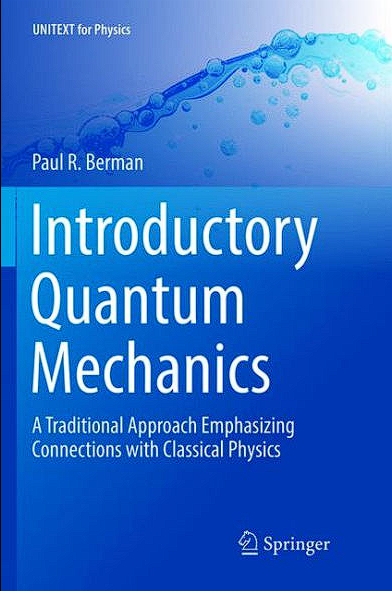
Introduction to Perturbation Theory in Quantum Mechanics
Author: Francisco M. Fernández, Ph.D. Category: fisika kuantum Publisher: CRC Press ISBN: 978-0750309986 Perturbation theory is an approximate method that enables one to solve a wide variety of problems
in applied mathematics, and for this reason it has proved useful in theoretical physics and chemistry
since long ago. Mosttextbooksonclassical mechanics, quantummechanics, andquantumchemistry
exhibit a chapter, or at least a section, dedicated to that celebrated approach which is afterwards
applied to several models.
In addition to the general view of perturbation theory offered by those textbooks, there is a wide
variety of techniques that facilitate the application of the approach to particular problems in the
f
ields mentioned above. Such implementations of perturbation theory are spread over many papers
and specialized books. We believe that a single source collecting most of those methods may profit
students of theoretical physics and chemistry.
For simplicity, in this book we concentrate on problems that allow exact analytical solutions of
the perturbation equations and avoid those that require long and tedious numerical computation that
may divert the reader’s mind from the core of the problem. However, we also resort to numerical
results when they are necessary to illustrate and complement important features of the theory.
In order to compare different methods, we apply them to the same models so that the reader may
clearly understand why we prefer one or another. Sometimes, we also apply perturbation theory to
exactly solvable models in order to illustrate the most relevant features of the approximate method
and to disclose some of its limitations. This strategy is also suitable for clearly understanding the
improvements in the perturbation series.
In this introductory book we try to keep the mathematics as simple as possible. Consequently,
weavoid a thorough discussion of certain topics, such as the analytical properties of the eigenvalues
of simple nontrivial quantum-mechanical models. The reader who is interested in going beyond the
scope of this book will find the necessary references for that purpose.
Nowadays, there are many symbolic processors that greatly facilitate most analytical calculations,
andthisbookwouldnotbecompleteifitdidnotshowhowtoapplythemtoperturbationtheory. Here
we choose Maple® because it is uncommonly powerful and simple at the same time. In addition,
Maple offers a remarkably friendly interface that enables the user to organize his or her work in the
form of useful worksheets which can be exported in several formats. For example, here we have
chosen LATEX® to produce some of the tables, thus avoiding unnecessary transcription of the results
that may lead to misprints.
Maple allows one to do a great deal of calculation interactively, which is commonly useful to
understand the main features of the problem, and when programming becomes necessary, Maple
language is straightforward and easy to learn. Both modes of calculation have proved most useful
for present work, and our programs reflect this fact in that they are not completely automatic or
foolproof. In the program section we show several examples of the Maple procedures used to obtain
the results discussed in this book, and we think that the hints given there are sufficient for their
successful application. However, the reader who finds any difficulty is encouraged to contact the
author via E-mail at: [email protected].
Back